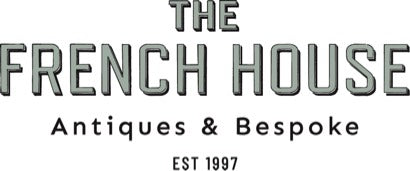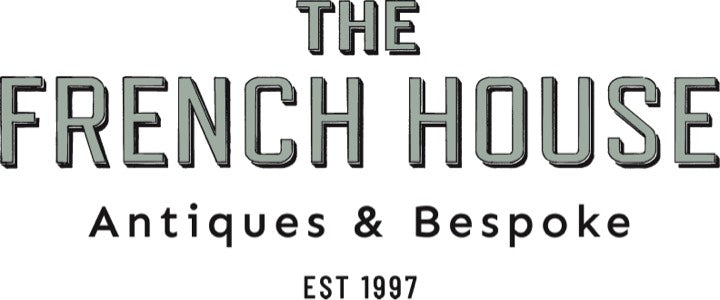We re-open on Monday 29th December. Our showroom will be closed on Wednesday 31st December 2025 and on Thursday 1st January 2026. We're open as usual from Friday 2nd January (Mon-Sat, 10am-5pm). Joyeux Noël et Bonne Année!
We re-open on Monday 29th December. Our showroom will be closed on Wednesday 31st December 2025 and on Thursday 1st January 2026. We're open as usual from Friday 2nd January (Mon-Sat, 10am-5pm). Joyeux Noël et Bonne Année!
Aubusson, a picturesque rural town in the Creuse region of Central France, is celebrated for more than just its culinary delights — such as hazelnut cake (gâteau creusois), cheeses, and dried meats. It is best known as the "world capital of tapestry," a title earned through centuries of exceptional craftsmanship. Generations of weavers in Aubusson have produced intricate, handmade tapestries that are recognised worldwide for their artistry and quality.
While the term "tapestry" often refers to wall hangings, Aubusson's textile tradition extends to rugs and furniture upholstery as well. The town's tapestry heritage dates back to the 14th century, when skilled Flemish weavers, fleeing religious persecution, settled in the area. Aubusson was an ideal location for textile production, thanks in part to the Creuse River, whose acidic waters played a crucial role in cleaning wool and setting vibrant dyes.
We had the incredible opportunity to visit this beautiful town recently, and we learned so much about this ancient art form. Read on to find out what we acquired during our visit…
Tapestries have been a significant form of artistic expression for centuries, spanning diverse cultures from ancient Egypt to the Incas. In Europe, tapestry production flourished between the mid-14th and mid-18th centuries, becoming a prized art form among the elite. These intricate works were highly sought after for decorating palaces and grand estates, symbolising wealth and status. Major centres of tapestry manufacturing emerged in northern France — particularly in Paris (Gobelins), Beauvais, and Arras — as well as in the southern Netherlands and Brussels, which became the industry's leading hub by the 16th century.
Aubusson gained prominence in the 17th century as a centre for tapestry craftsmanship. In 1664, Jean-Baptiste Colbert, superintendent of the royal administration, called on Aubusson weavers to improve tapestry production processes and techniques. Impressed by the quality of their work, Louis XIV grants them the status of ‘Manufacture Royale’ in 1665. This prestigious status protects the local craftsmanship, production and trade, helping family businesses survive, among increasingly competitive foreign manufacturing. The title also came with some conditions, including a minimum training period, strict quality control, a label displaying the royal mark and a distinctive blue border, certifying their origin and excellence.


Today, only tapestries woven within the Creuse region can bear the "Aubusson" trademark, similar to the controlled designation of origin ("appellation d’origine contrôlée") used in the wine industry. This ensures that the tapestries adhere to traditional standards of quality and craftsmanship.
In recognition of this rich heritage, the craftsmanship of Aubusson tapestry weaving was inscribed on UNESCO’s list of Intangible Cultural Heritage of Humanity in 2009, affirming its global cultural significance.
The most common themes depicted in Aubusson tapestries include mythology, history, nature, and, occasionally, interpretations of fables by contemporary authors. Early designs were deeply influenced by Gothic and medieval styles, but by the 17th and 18th centuries, the aesthetic evolved to embrace the popular baroque and rococo styles. These later designs were characterised by lush landscapes, pastoral scenes, intricate floral patterns, and classical motifs.
Figures often appeared in these tapestries, typically set against a backdrop of dense foliage. Birds were a frequent subject, shown perched on branches in the foreground, while the background featured glimpses of distant towers and towns peeking through the greenery, adding depth and vitality to the composition. Similar themes and motifs were also common in Flemish and Parisian tapestries of the same period.
The design process for a tapestry was typically initiated by a wealthy patron, royal family, or religious institution. These commissioners would specify the subject matter, whether it be a historical event, religious scene, or a decorative theme such as landscapes or mythological figures. Artists and weavers collaborated closely on the final design, making necessary adjustments to ensure it could be effectively translated into woven form.
Tapestry design continued to evolve, and in the 20th century, modern artists like Jean Lurçat and Picasso introduced contemporary elements to this traditional medium, infusing it with new artistic perspectives. Today, artists around the world contribute to keeping the art of tapestry alive, including a dedicated group of weavers in Aubusson who continue to produce unique works using manual techniques that have been practiced for over five centuries.
The exceptional quality of Aubusson tapestries can be attributed to the meticulous manual labour carried out by highly trained and experienced craftsmen. Every step of the process, from dyeing the yarn to weaving the tapestry, is executed with precision. Weavers, known in French as lissiers, work on high-warp or low-warp looms, crafting each piece on the reverse side while following a carefully prepared template. Using manually dyed yarn, they bring the colourful designs to life. This painstaking and time-consuming process can take months, or even years, to complete.
Although the entire tapestry-making process is complex, for the purposes of this blog, we will focus on the first crucial step: the creation of the template, or "carton". Cartons are full-scale, detailed designs painted on thick paper that serve as blueprints for the weavers. Artists typically used materials such as oil painting and gouache, to create these cartons. The process of designing a carton requires close collaboration between the artist and the weaver, merging fine art with traditional craftsmanship. Since the final tapestry could serve as a wall hanging, rug, or furniture upholstery, the style, shape, and colour schemes often varied based on the design’s intended use.


The artist had to consider how the woven material would affect the appearance of colour and texture, making it essential for the carton to capture not only the design but also the precise colours, shading, and intricate details needed for an accurate translation into the woven form.
Once the carton was completed, dyers would replicate the colours of the painting onto different threads. The carton was then placed beneath the warp threads on the loom. Weavers translated the design into a woven form, carefully matching the colours and shapes. Because the cartoon was created at the same scale as the final tapestry, this allowed for accurate proportions and attention to detail.
Sadly, many of the artists who created these original cartons have remained anonymous, as their work was just one component of a larger, complex process. The tapestry itself was often viewed as the ultimate artistic achievement. As a result, most cartons were unsigned, leaving many talented designers without the recognition they deserved.
During our visit to Aubusson, we had the opportunity to explore a workshop dedicated to the history and cultural significance of Aubusson tapestries. After admiring the craft and learning about the intricate processes involved, we met with a local resident who had acquired a number of the original artworks from the textile workshops, and we agreed to purchase several of these exquisite works. We've detailed the symbolism of four of these paintings below.
To view the full selection, all available for purchase, please click here >


Left: A classical representation of dense greenery and a seemingly exotic bird perched on a branch. The form of this painting suggests that the final tapestry was used on the backrest of an armchair. While the damage is commensurate with age, the various colours have retained their depth.
Right: A bright and colourful pastoral scene, another common theme in tapestry of the period. Many of these scenes include a stream, lush landscapes and flowers, alongside a couple embracing, symbolising love.


Left: This piece, likely to be for a chair backrest or seat, is a depiction of the famous fable 'Le Loup et l'Agneau' ('The Wolf and the Lamb'), by Jean de la Fontaine. Between the 17th and 19th centuries, many tapestries were inspired by contemporary fables.
Right: The lyre is commonly associated with Greek and Roman mythology, and specifically Apollo, the Greek god of music and dance (among other attributes).
If you have any questions or would like to enquire about any of the cartons, please contact us.
Since we started The French House, over 25 year ago, we have made countless trips to France, sourcing the hard to find, restoring the ‘past its best’ and keeping our prices low and stock current with trends.
Here’s a few of our favourite ‘must-haves’ and advice on recreating this French style in your home.

